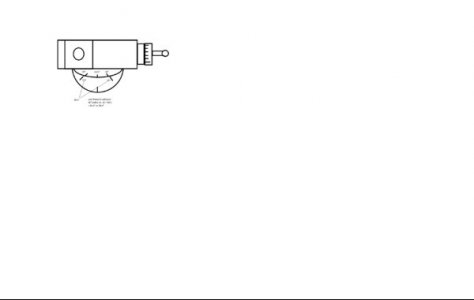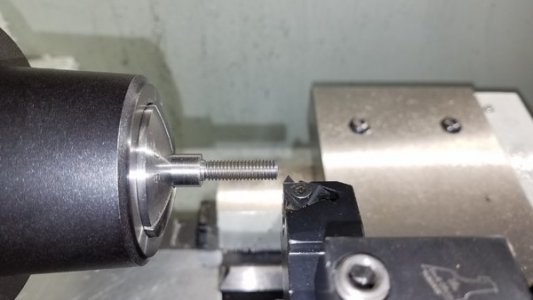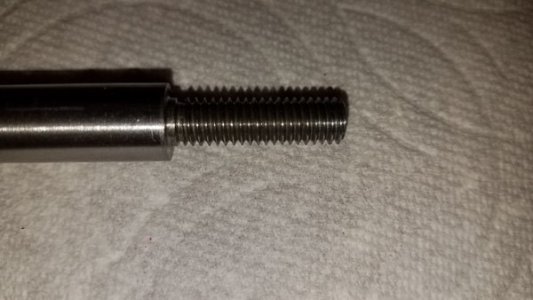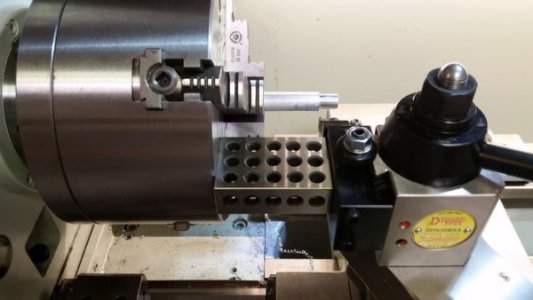- Joined
- Apr 17, 2015
- Messages
- 323
Ok its 0600 and I have not been able to sleep due to back and leg pain. So Ill throw this into the mix just to stir the pot. It is NOT necessary to cut threads with the compound. In fact I don't even have a compound on my lathe. It was the weakest link in terms of chatter on mine and most lathes. So I took it off and could not be happier. Just square up your tool using the good old fish tail tool or in the case of most insert tools tram the shank with a dial indicator. When you cut the thread just advance the tool straight into the work slowly, use a good cutting fluid for the type of material your cutting and viola decent threads.


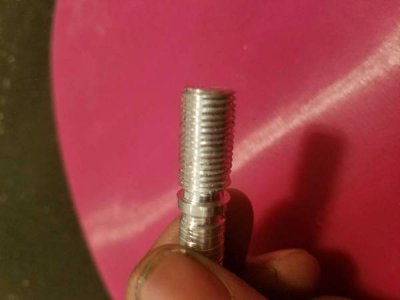
 If anything, I would just run a 3/8-24 die over it now to clean up the threads a bit & call it done.
If anything, I would just run a 3/8-24 die over it now to clean up the threads a bit & call it done.
